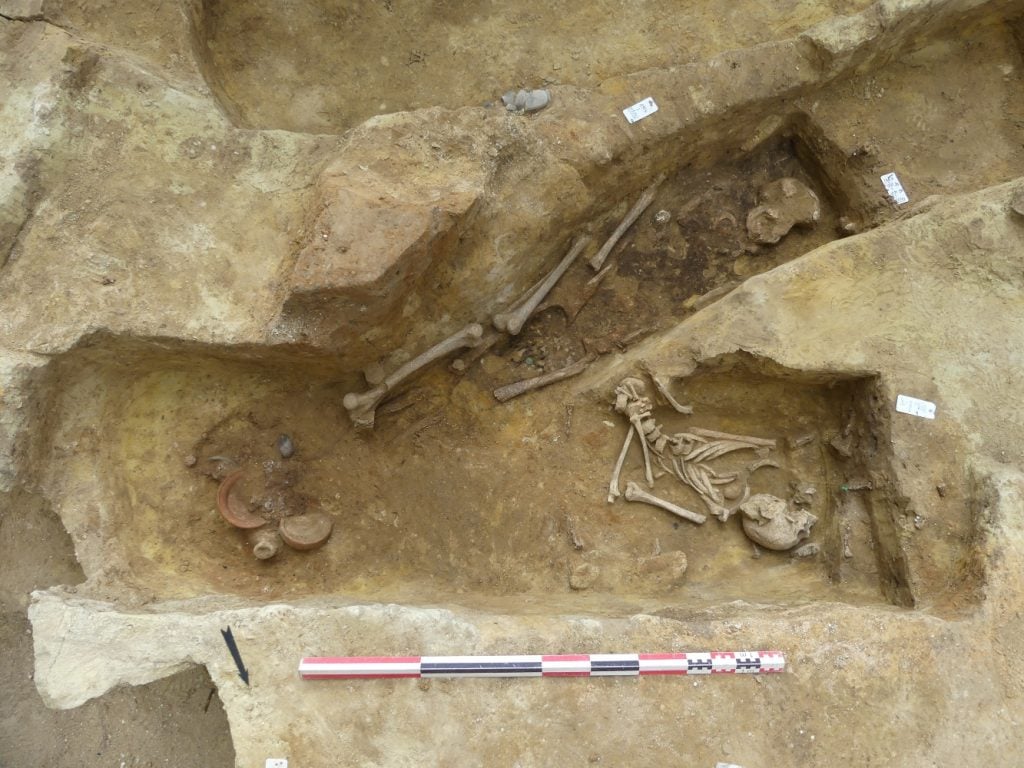Archaeology & History
Parisian Archaeologists Have Located a Long-Lost Ancient Roman Site Buried Underneath a Train Station
The rich array of coins, ceramics and animal remains shed light on ancient society in Paris.

The rich array of coins, ceramics and animal remains shed light on ancient society in Paris.

Jo Lawson-Tancred

A mega necropolis containing 50 graves has been discovered next to the Port-Royal train station in Paris. The excavation of a skeleton with a coin in its mouth has allowed archaeologists to date the site to around the 2nd century C.E.
As well as the skeletons of men, women and children, the researchers found nails that had survived from their wooden coffins and shoes. The dead had also been buried with jewelry, hairpins and belts.
The coins found with some bodies were likely intended as a bribe for Hades’ ferryman Charon that would ensure safe passage across the river Styx into the underworld, a practice known at the time as “Charon’s obol.”
The entire skeleton of a pig and other animal remains indicate that the site may also have been used for making sacrifices to the Gods.
The ancient cemetery is believed to be “Saint Jacques,” which was first dug up by looters in the 1800s. They took anything that was obviously valuable but left most of the artifacts behind and eventually the site’s exact location became lost to time, even going unnoticed when the station was built in the 1970s.
Ahead of the construction of a new station exit, however, a special excavation began in March. France’s National Institute of Preventive Archaeological Research (INRAP) successfully relocated the necropolis and unearthed new sections that have been left untouched since antiquity.
The necropolis was part of the ancient Gallo-Roman town of Lutetia on the banks of the Seine, a predecessor of modern-day Paris. It was inhabited by a Gallic tribe known as the Parisii but was under the rule of the Roman Empire.
Everything has now been removed from the site for lab analysis, and it is hoped that the discoveries will provide a rare insight into a period of history that is, according INRAP’s president Dominique Garcia, “generally not well known.”
“This will allow us to understand the life of Parisii through their funeral rites, as well as their health by studying their DNA,” said Camille Colonna, an anthropologist for INRAP, according to a report by France 24.
More Trending Stories: